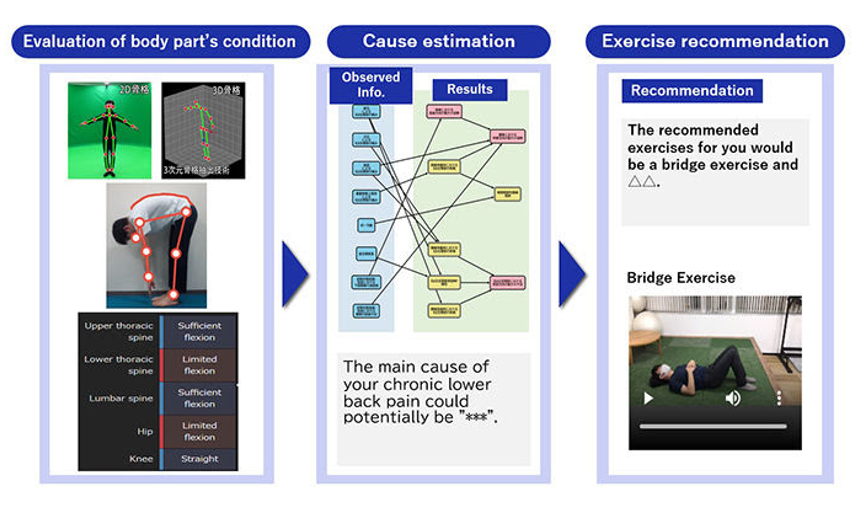
NEC Corporation and Tokyo Medical and Dental University (TMDU) have developed a technology to support self-care for chronic non-specific lower back pain (CLBP) by using artificial intelligence (AI) to analyse image and interview data taken with smart devices. This will enable individuals with chronic back pain to easily check their lower back condition and to see possible causes and recommendations for customized exercises, regardless of the time or location.
This technology was developed based on NEC's state-of-the-art AI, including 2D/3D human pose estimation technology and abductive reasoning technology, as well as TMDU's medical knowledge. NEC’s state-of-the-art AI provides a 2D/3D human pose estimation technology to enable a highly accurate posture estimation, especially for images taken by individuals from various angles on their smart devices. This is an asset NEC’s new AI technology brings to the table over other conventional technologies that may estimate distorted skeletal structure depending on the shooting angles, resulting in a loss of accuracy. This technology allows the integration of image data to present a relationship between body parts and back shape to enable evaluation of the condition of each body part with the same high accuracy as an expert.
NEC’s new AI platform also offers a proprietary abductive reasoning technology using a Satisfiability Assessment Problem (SAT) solver. The abductive reasoning technology, combined with the knowledge base comprising major causes of chronic back pain, patient interview data, and the condition of each body part, enables rapid, accurate, and comprehensive estimation of the major causes of chronic low back pain within an average of 10 seconds, based on image and interview data from any individual at the user end.
After an accurate analysis of body posture images and causal factors, an exercise program suitable for improving CLBP is presented on a user’s device according to the presumed cause of the pain. Since exercise programs are provided by video, individuals with CLBP can perform the exercise program at home by themselves.
With an established pipeline and a plan for the NEC and TMDU aim to verify the effectiveness of this technology through testing at an NEC care center in Tokyo and other facilities during fiscal 2024. In the future, NEC and TMDU plan to expand the scope of the application of this technology from CLBP to neck and shoulder disorders.